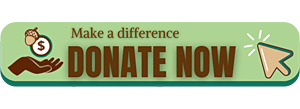The Internal Revenue Service (IRS) reminds taxpayers that the 2025 filing season is rapidly approaching. The IRS is attempting to provide improved taxpayer services. One of the primary ways for taxpayers to benefit is to sign up for an IRS Online Account.
There is an IRS Get Ready page on IRS.gov. It has many practical tips and resources for taxpayers.
- IRS Online Account — You may create an Online Account and enjoy multiple benefits. With the Online Account, you can review your most recent tax return and adjusted gross income. You can obtain an Identity Protection PIN or sign a power of attorney for your tax preparer. The Online Account allows you to select your language preference and to receive up to 200 various IRS electronic notices. You can review and cancel payments and set up a payment plan.
- Identity Protection Personal Identification Number (IP PIN) — An IP PIN is a six–digit number that protects you from having your identity stolen and prevents the filing of a federal tax return. This increases your personal and financial information safety. A new feature is that the IRS will accept a return with an already claimed dependent if you have a valid IP PIN. This will allow the IRS to accelerate the issuance of your tax refund.
- Quarterly Estimated Payments — Some taxpayers have non-wage income and must make estimated payments. There is a Tax Withholding Estimator on IRS.gov that may help you calculate the amount of your estimated payment. The last quarterly estimated payment for 2024 is due on January 15, 2025.
- 1099-K Reporting — If you received over $5,000 in payments for goods or services through an online marketplace, you can anticipate receiving IRS Form 1099-K in January 2025. While income from part-time work, side jobs or sale of goods and services is taxable, taxpayers who exceed the $5,000 limit may receive Form 1099-K. The IRS reminds taxpayers that they are taxable on all income even if they did not receive this form.
- Digital Asset Taxes — Many taxpayers own or trade Bitcoin or other digital assets. The income from virtual currencies, cryptocurrencies, stablecoins or non–fungible tokens (NFTs) must be reported. Taxpayers should keep records about the purchase, sale or exchange of digital assets. The 2024 federal tax return will ask taxpayers to answer “Yes” or “No” whether they have received a payment for services, sold, exchanged or otherwise disposed of a digital asset. If the taxpayer checks the "Yes" box, he or she must report all income related to the digital transaction.
The IRS often takes less than 21 days after it receives your tax return to issue a refund. An exception exists for returns that claim the Earned Income Tax Credit (EITC) or Additional Child Tax Credit (ACTC). Returns claiming the EITC or ACTC are blocked from refunds until the middle of February.
You should gather your tax information and have a good record-keeping system. Your records generally are collected by the end of January. They could include Forms W-2, Forms 1099, Form 1099-K from third-party payment vendors, Form 1099-NEC for nonemployee compensation, Form 1099-MISC for miscellaneous income and Form 1099-INT for interest income.
Filing electronically and selecting direct deposit is both fast and safe. An estimated 70% of taxpayers will be qualified to use the complementary filing system that is called IRS Free File. All taxpayers can use the IRS Free File Fillable Forms. The IRS has added another 12 states where taxpayers with fairly simple tax returns can use the Direct File program. Older adults and military members also may benefit from the Volunteer Income Tax Assistance (VITA) or Tax Counseling for the Elderly (TCE) programs.





